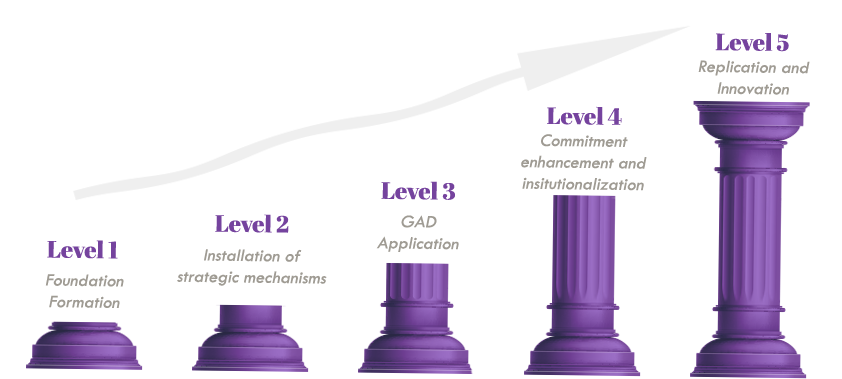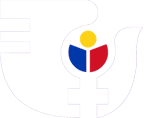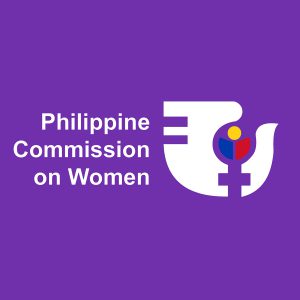Gender Mainstreaming
Gender equality as the goal; gender mainstreaming as the strategy.1
Gender Mainstreaming or Gender and Development (GAD) mainstreaming is the major global strategy for ensuring that the government pursues gender equality in all aspects of the development process to achieve the vision of a gender-responsive society where women and men equally contribute to and benefit from development. Its importance has been extensively discussed since governments committed to this concept in the Beijing Platform for Action during the Fourth United Nations World Conference on Women in 1995.
It endeavors to look more comprehensively at the relationship between men and women in their access to and control over resources, decision making, and benefits and rewards within a particular system—it may be an organization, a government or an entire society.2
The process of gender mainstreaming necessitates the transformation of institutional structures, culture and practices wherein gender concerns become central instead of remaining as peripheral issues and concerns.3
What is the Mainstream?
The “mainstream” is an inter-related set of dominant ideas, values, practices, institutions and organizations that determine “who gets what” within a society. The ideas and practices with the mainstream tend to reflect and reinforce each other and thus provide a rationale for any given allocation of societal resources and opportunities.4
Becoming part of the mainstream means:5
• women and men have equitable access to resources, including opportunities and rewards. It implies equal participation in influencing what is valued in shaping options within society.
• sharing equitably in the benefits of development.
• offers the opportunity to influence who does what in a society, who owns (and can own) what, who has access to jobs and income, who controls the society’s resources and institutions, who makes decisions, who sets priorities.
Entry Points of Gender Mainstreaming
GAD mainstreaming requires interventions from different stages of development planning processes, from planning to programming, budgeting, implementation, monitoring and evaluation. There are four critical entry points to GAD mainstreaming, namely: policies, programs and projects, people, and enabling mechanisms. These are not in any order of importance. A government agency has the option on what entry point to use first. They may opt to adopt strategies that characterize more than one entry point.
Policies
This refers to the official statements and pronouncements of support for gender mainstreaming issued by the organization. These may be in the form of department orders, special orders, administrative orders, memoranda, and executive orders that spell out the commitment of an organization to pursue gender mainstreaming. It also includes national and sectoral plans, specific guidelines, manual of implementation and the GAD Framework/Strategic Plan. Through these issuances, the organization expresses its recognition and acceptance of gender mainstreaming as a critical and legitimate concern, even in broad or general terms.6
People
This refers to the relevant stakeholders who assume the task of gender mainstreaming. The following are critical to the success of gender mainstreaming: GAD champions among top management who actively support the gender mainstreaming program; recognition of GAD Focal Point System and staff members as GAD experts; internal and external clients who are able to participate in the planning, implementation, monitoring and evaluation of programs, activities and projects.7
As an entry point, people shares four complementary and distinct roles8:
The Sponsor. “The individual or group who has the power to sanction or legitimize change.” Sponsors consider the potential changes facing an organization and assess the changes and opportunities. They decide which changes will happen, communicate the new priorities to the organization, and provide the proper reinforcement to assure success. They are also “responsible for creating an environment that enables these changes to be made on time and within budget.”
In gender mainstreaming, the sponsors are the heads of the organizations. They express support to gender mainstreaming by issuing policies or installing the necessary enabling mechanisms such as approving the organization’s GAD Plan and Budget. They also set the direction of the overall gender mainstreaming efforts of the organization
The Change Agent. “The individual or group who is responsible for actually making the change. The agent’s success depends on the ability to diagnose potential problems, develop a plan to deal with these issues, and execute the change effectively.”
The primary change agents are usually the GAD Focal Point System Members because they facilitate the implementation of gender mainstreaming in the organization.
The Target. “The individual or group who must actually change or those who will benefit from development.”
The term “target” is used because these people are the focus of the change effort and play a crucial role in the short- and long-term success of an organization’s gender mainstreaming efforts.
To increase the likelihood of success, they must be educated to understand the changes that are expected to accommodate. They must also be involved in the implementation process. The targets of gender mainstreaming are people in the bureaucracy, the field workers and the clients of the different organizations. The officials and members of the bureaucracy are given GAD capability programs to engage in the gender mainstreaming efforts.
The Advocate. “The individual or group who wants to achieve change but lacks the power to sanction it.” The presence of GAD advocates determines the success rate of sustaining GAD mainstreaming initiatives. The presence of GAD advocates helps lay a solid foundation built on appreciation of GAD as a rights-based approach to development. Rights-based approach means achieving a positive transformation of power relations among the different development actors.
Programs and Projects (PAPs)
This refer to the flagship programs or activities and projects that serve as a strategic entry point to gender mainstreaming in an organization. It is the most practical entry point since it involves the actual implementation of the mandate of an organization. PAPs can be review and issuance of revised GAD policies, application of gender analysis tools, and conduct of GAD advocacy and regular updating of GAD mechanisms such as the GAD database.
Enabling Mechanisms
This refer to the systems and mechanisms installed in the organization and the funds allocated for GAD activities such as the GAD Focal Point System and Knowledge Management System.
The success of any gender mainstreaming efforts depend, to a large extent, on the resources allocated and the mechanisms that are institutionalized to implement it.
Enabling mechanisms can be GAD Funds Audit of the Commission on Audit, which greatly helped in ensuring the institutional compliance to the minimum 5% utilization of the GAD budgets of government agencies and local government units.
Levels of Gender Mainstreaming

In the course of implementing gender mainstreaming, an organization may progress through the following levels:9
Level 1: Foundation Formation
This is the initial stage, where the level of gender awareness of an organization is heightened through raising people’s awareness and generating support for gender mainstreaming. The challenge at the onset of any change effort is getting people to understand, appreciate and imbibe the need for change. This level also sets the tone for appreciating value-added in committing to GAD as one of the priority thrusts of the organization.
Level 2: Installation of Strategic Mechanisms
This marks the transition of the organization toward gender mainstreaming. Some of the enabling conditions created and established by top management to support GAD are:
• Putting key people, necessary policies, support structures, systems and mechanisms in pace to facilitate and sustain gender mainstreaming
• Initial application of GAD concepts and tools
Level 3: GAD Application
This is the period where GAD-related activities are already institutionalized within the organization. Interventions are usually based on a strategic GAD agenda that guides GAD planning and budgeting implementation. The GAD planning and budgeting have become more strategic in terms of applying gender analysis in regular programs that result in either increased attribution of the GAD budget and/or more gender responsive programs.10
Level 4: Commitment Enhancement and Institutionalization
In this level, the organization has already institutionalized gender mainstreaming and is focused on sustaining its efforts. It also challenges other organizations to continuously evaluate and improve their efforts. After all, the long-term goal is to improve the government’s ability to respond to gender issues and concerns on a sustained basis.11
Level 5: Replication and Innovation
When an organization reached this level, it means that GAD has been fully mainstreamed into its mandate and is being recognized by others as a model in gender mainstreaming. The GAD Focal Person System members of the organization do not only serve as internal experts but are also invited by other organizations as GAD technical assistance providers. GAD-related mechanisms established by the organization are also certified as learning hubs by national and/or international organizations.12
Cited Sources:
1 United Nations: Office of the Special Adviser on Gender Issues and Advancement of Women. (2002). Gender Mainstreaming: An Overview. Retrieved here on June 2019.
2 Innes, M. (Ed.). (2000). Accelerating Change: Resources for Gender Mainstreaming. Quebec: Canadian International Development Agency.
3 A Handbook on the Application of the Enhanced Gender Mainstreaming Evaluation Framework. (2016). Manila: Philippine Commission on Women.
4 Schalkwyk, et al. (1996) as cited in Innes, Melissa. (Ed.) (2000). Accelerating Change: Resources for Gender Mainstreaming. Quebec: Canadian International Development Agency.
5 Innes, M. (Ed.) (2000). Accelerating Change: Resources for Gender Mainstreaming. Quebec: Canadian International Development Agency
6 A Handbook on the Application of Enhanced Gender Mainstreaming Evaluation Framework. (2016). Manila: Philippine Commission on Women.
7 Ibid.
8 Conner (1992) as cited in A Handbook on the Application of Enhanced Gender Mainstreaming Evaluation Framework. (2016). Manila: Philippine Commission on Women.
9 A Handbook on the Application of Enhanced Gender Mainstreaming Evaluation Framework. (2016). Manila: Philippine Commission on Women.

